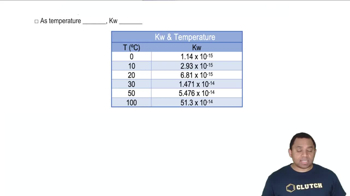Silicon carbide, SiC, has the three-dimensional structure shown in the figure.
(b) Would you expect the bonding in SiC to be predominantly ionic, metallic, or covalent?
 Verified step by step guidance
Verified step by step guidance


Silicon carbide, SiC, has the three-dimensional structure shown in the figure.
(b) Would you expect the bonding in SiC to be predominantly ionic, metallic, or covalent?
Energy bands are considered continuous due to the large number of closely spaced energy levels. The range of energy levels in a crystal of copper is approximately 1 × 10–19 J. Assuming equal spacing between levels, the spacing between energy levels may be approximated by dividing the range of energies by the number of atoms in the crystal. (b) Determine the average spacing in J between energy levels in the copper metal in part (a).
Sodium oxide (Na2O) adopts a cubic structure with Na atoms represented by green spheres and O atoms by red spheres.
(c) The unit cell edge length is 5.550 Å. Determine the density of Na2O.